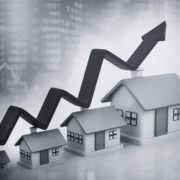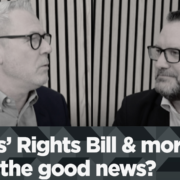Key Points
- Annual house price inflation at 8.8% compared to 9.6% in May
- Average UK property price now £260,358
- Scotland and Northern Ireland amongst areas seeing strongest growth
- Average price: £260,358
- Monthly change: -0.5%
- Quarterly change: +2.9%
- Annual change: +8.8%
Housing activity
HMRC monthly property transactions data for UK home sales decreased in May 2021.
UK seasonally adjusted residential transactions in May 2021 were 114,940 – down by 3.8% from April (down 8.7% on a non-seasonally adjusted basis). The latest quarterly transactions (March-May 2021) were approximately 7.1% higher than the preceding three months (December 2020-February 2021).
Year on year, transactions were 138.2% higher than May 2020 (123.4% higher on a non-seasonally adjusted basis). (Source: HMRC, seasonally-adjusted figures)
Mortgage approvals rose in May for the second month in a row.
The latest Bank of England figures show the number of mortgages approved to finance house purchases rose in May 2021 by 1% to 87,545.
Year-on-year, the May figure was 827% above May 2020 (which was during the first lockdown period). (Source: Bank of England, seasonally-adjusted figures)
Results from the latest (May 2021) RICS Residential Market Survey show a wide disparity between buyer demand and supply across the market.
New buyer enquiries recorded a net balance of +32%, although this eased from April’s figure of +45%. Newly agreed sales also rose over the month to a net balance of +30%.
New instructions fell to -23%, down from -4% previously.
The gap between the new buyer enquires and new instructions is now at its widest since November 2013.
Stock levels have also dropped in recent months, with the average number of properties on estate agents books now at 40. (Source: Royal Institution of Chartered Surveyors’ (RICS) monthly report)
Russell Galley, Managing Director, Halifax, said:
“The average UK house price slipped by -0.5% in June, the first monthly fall since January.”
As a result annual house price inflation also eased back slightly from May’s 14-year high of +9.6% to stand at +8.8% in June.”
“It is important to put such a moderate decrease in context, with average prices still more than £21,000 higher than this time last year, following a broadly unprecedented period of gains.”
“With the stamp duty holiday now being phased out, it’s was predicted the market might start to lose some steam entering the latter half of the year, and it’s unlikely that those with mortgages approved in the early months of summer expected to benefit from the maximum tax break, given the time needed to complete transactions.”
“That said, with the tapered approach, those purchasing at the current average price of £260,358 would still only pay about £500 in stamp duty at today’s rates, increasing to around £3,000 when things return to normal from the start of October.”
“Government support measures over the last year have helped to boost demand, particularly amongst buyers searching for larger family homes at the upper end of the market. Indeed, the average price of a detached home has risen faster than any other property type over the past 12 months, up by more than 10% or almost £47,000 in cash terms. At a cost of over half a million pounds, they are now £200,000 more expensive than the typical semi-detached house.”
“That power of homemovers to drive the market, as people look to find properties with more space, spurred on by increased time spent at home during the pandemic, won’t fade entirely as the economy recovers.”
“Coupled with buyers chasing the relatively small number of available properties, and continued low borrowing rates, it’s a trend which can sustain high average prices for some time to come.”
“However, we would still expect annual growth to have slowed somewhat more by the end of the year, with unemployment expected to edge higher as job support measures unwind, and the peak of buyer demand now likely to have passed.”
Regions and nations house prices
Whilst the two Midlands regions and Greater London saw slightly slower annual price gains compared to May, all the other regions and nations saw a strengthening of inflation.
Wales (12.0%) continues to lead the way on annual house price growth, registering its strongest performance since April 2005, whilst Northern Ireland (11.5%), the North West (11.5%), Yorkshire and Humberside (10.9%) and Scotland (10.4%) all registered double-digit gains.
For Northern Ireland and Scotland, the annual price rises were the highest recorded since late 2007, while for the North West and Yorkshire, inflation was the strongest since early 2005.
At the other end of the scale, the South of England continues to lag somewhat behind the rest of the country (Eastern England and the South East recording inflation rates of around 7%).
However, once again its Greater London that is somewhat of an outlier: house price inflation there was just 2.9% year-on-year, though as we’ve noted previously, there are several unique factors likely to be weighing on the capital’s property market.
Matthew Cooper, Founder & Managing Director of Yes Homebuyers commented:
“Cracks are starting to appear across the UK property market and the unsustainable rates of house price growth seen since the introduction of the stamp duty holiday are starting to give way to negative movement.”
“This is hardly surprising given the quick-fix nature of the government’s approach.”
“Rather than addressing the housing crisis head-on, they’ve once again chosen to stimulate prices in the short term by increasing the imbalance between supply and demand, so that when the dust settles there are at least some positive indicators of economic performance during the pandemic.”
Director of Benham and Reeves, Marc von Grundherr, commented:
“It’s only natural that the market should pause for breath after what has been an extremely prolonged period of heightened house price growth.”
“A marginal dip in the monthly rate of growth is certainly nothing to worry about and simply doesn’t signal the start of a market crash.”
“In fact, we’re seeing many areas of the market start to build momentum as we ease further and further away from the lockdown restricted life we’ve been living for the last year and a half.”
“Many are now starting to return to the workplace and foreign interest is also starting to build despite ongoing travel restrictions.”
“You only have to look at London to see this slow but steady recovery in action.”
“While the capital continues to lag behind much of the UK, the foundations being laid now will ensure that any impact due to the end of the stamp duty holiday is minimal, and house prices continue to climb throughout the remainder of the year and into the next.”
Managing Director of Barrows and Forrester, James Forrester, commented:
“What goes up, inevitably comes down again and it’s simply unrealistic to expect house prices to continue climbing at such an unheard-of rate forever.”
“Of course, the tapered end of the stamp duty holiday will bring about a natural market correction, but the proof in the pudding is the annual rate of growth which sits at nearly nine per cent.”
“The market remains in a very strong position and while we may see the rate of growth continue to cool, this is a world away from a substantial drop in market values.”























Comments